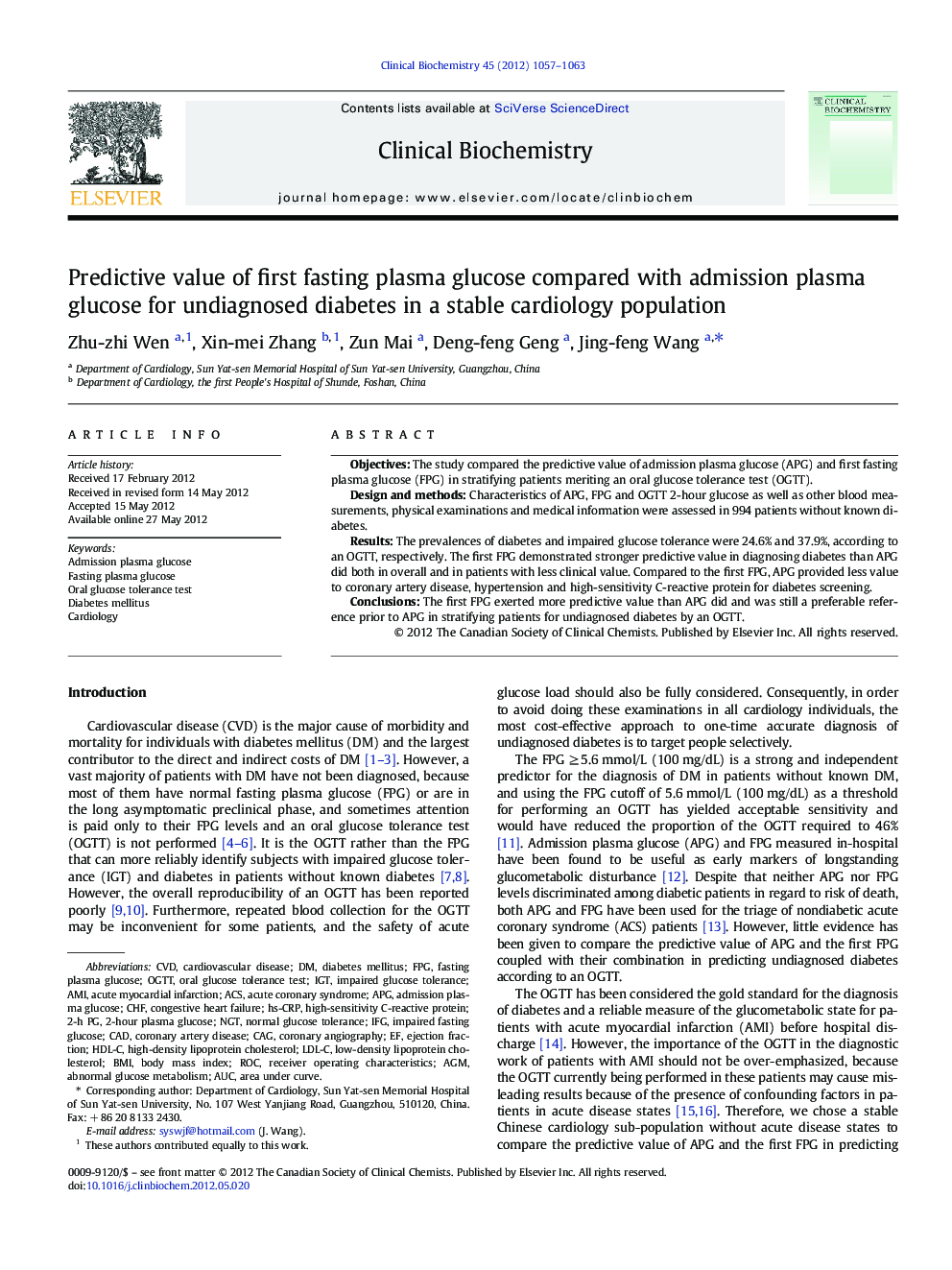| Article ID | Journal | Published Year | Pages | File Type |
|---|---|---|---|---|
| 1969869 | Clinical Biochemistry | 2012 | 7 Pages |
ObjectivesThe study compared the predictive value of admission plasma glucose (APG) and first fasting plasma glucose (FPG) in stratifying patients meriting an oral glucose tolerance test (OGTT).Design and methodsCharacteristics of APG, FPG and OGTT 2-hour glucose as well as other blood measurements, physical examinations and medical information were assessed in 994 patients without known diabetes.ResultsThe prevalences of diabetes and impaired glucose tolerance were 24.6% and 37.9%, according to an OGTT, respectively. The first FPG demonstrated stronger predictive value in diagnosing diabetes than APG did both in overall and in patients with less clinical value. Compared to the first FPG, APG provided less value to coronary artery disease, hypertension and high-sensitivity C-reactive protein for diabetes screening.ConclusionsThe first FPG exerted more predictive value than APG did and was still a preferable reference prior to APG in stratifying patients for undiagnosed diabetes by an OGTT.
► New-onset diabetes is common in cardiology population without known diabetes. ► Fasting glucose has a stronger correlation with postchallenge glucose than admission glucose does. ► Fasting glucose is better than admission glucose in predicting unknown diabetes. ► Fasting glucose is preferable to admission glucose in stratify patients for OGTTs.
